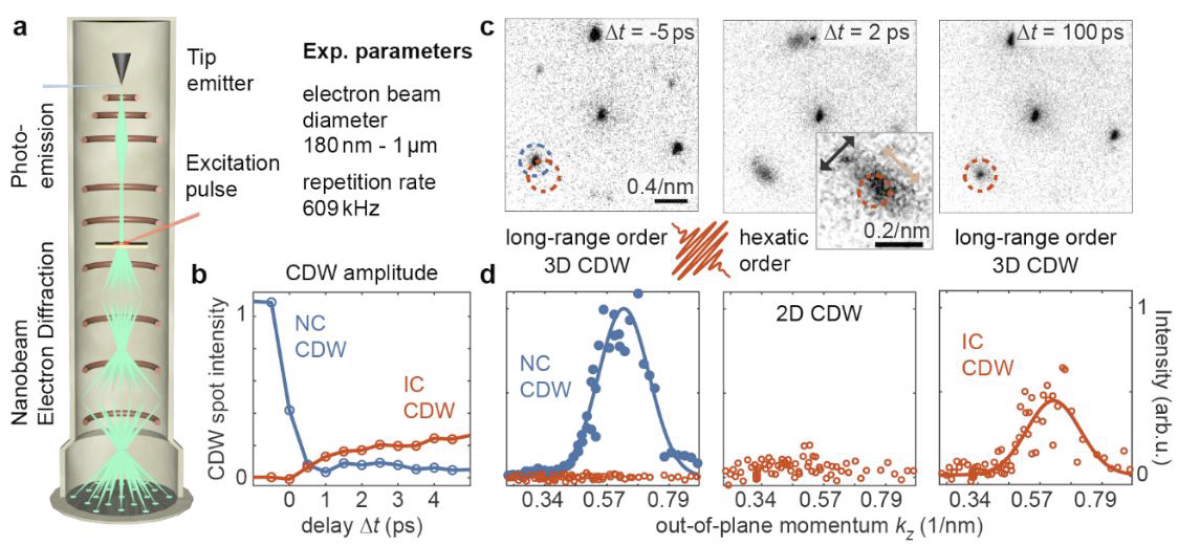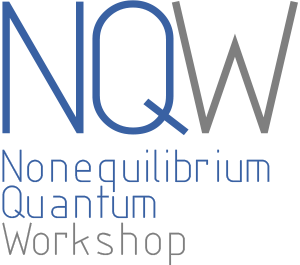
- This event has passed.
Light-induced hexatic state observed by ultrafast nanobeam diffraction
December 14, 2023 @ 09:30 - 10:00 CET
T. Domröse,1 Th. Danz,1 S.F. Schaible,2 K. Rossnagel,3,4 S.Y. Yalunin,1 C. Ropers1,2
1Max Planck Institute for Multidisciplinary Sciences, Göttingen, Germany
24th Physical Institute – Solids and Nanostructures, University of Göttingen, Germany
3Institute of Experimental and Applied Physics, Kiel University, Germany
4Ruprecht Haensel Laboratory, Deutsches Elektronen-Synchrotron DESY, Germany
Quantum materials are characterised by enhanced correlations between their microscopic degrees of freedom that favor the occurence of exciting physical properties that are tunable by optical excitation, including the formation of charge-density waves (CDWs). The investigation of the dynamics following such an optical quench is available in ultrafast transmission electron microscopes (UTEMs), versatile tools that combine nanometer spatial with femtosecond temporal resolution (Fig. 1a) [1,2].
Here, we investigate the transformation between the nearly-commensurate (NC) and the incommensurate (IC) CDW phase in the layered quantum material 1T-TaS2 [3,4]. Therein, selective contrast enhancement by means of ultrafast dark-field microscopy allows us to follow the spatially heterogeneous suppression of the NC phase on the nanoscale, particularly at interphase boundaries [3]. In a complementary approach, the establishment of three-dimensional IC CDW order is accessible by means of ultrafast electron diffraction [4]. Specifically, the high-coherence electron source of the Göttingen UTEM [2] enables collimated diffractive probing of nanometer-sized, spatially homogenous sample regions with high reciprocal-space resolution (Fig. 1c).

Fig. 1. a) UTEM schematics. b) Evolution of the CDW spot intensity of the IC (red) and the NC phase (blue). c) Characterisation of in-plane disorder. Transient hexatic order is encoded in the azimuthally broadened diffraction spots (brown arrow). d) CDW rocking curves. We find similar spot broadening also along the out-of-plane direction, indicative of a dimensional crossover.
Based on a tomographic reconstruction of the CDW diffraction spot shape during the dynamics, we identify an initial loss of interlayer correlations (Fig. 1d). Along the in-plane directions, this dimensional crossover is corroborated by a suppression of translational, but intact orientational order, paralleling the phenomenology of a hexatic phase [5]. We conclude that, in close analogy, the phase transition observed here unfolds via a network of topological point defects and a transient hexatic state.
Our results show how optical excitation can induce low-dimensional behaviour in functional materials. In the future, we expect ultrafast nanobeam electron diffraction to further enhance the investigation of non-equilibrium dynamics in the presence of spatial heterogeneity.


